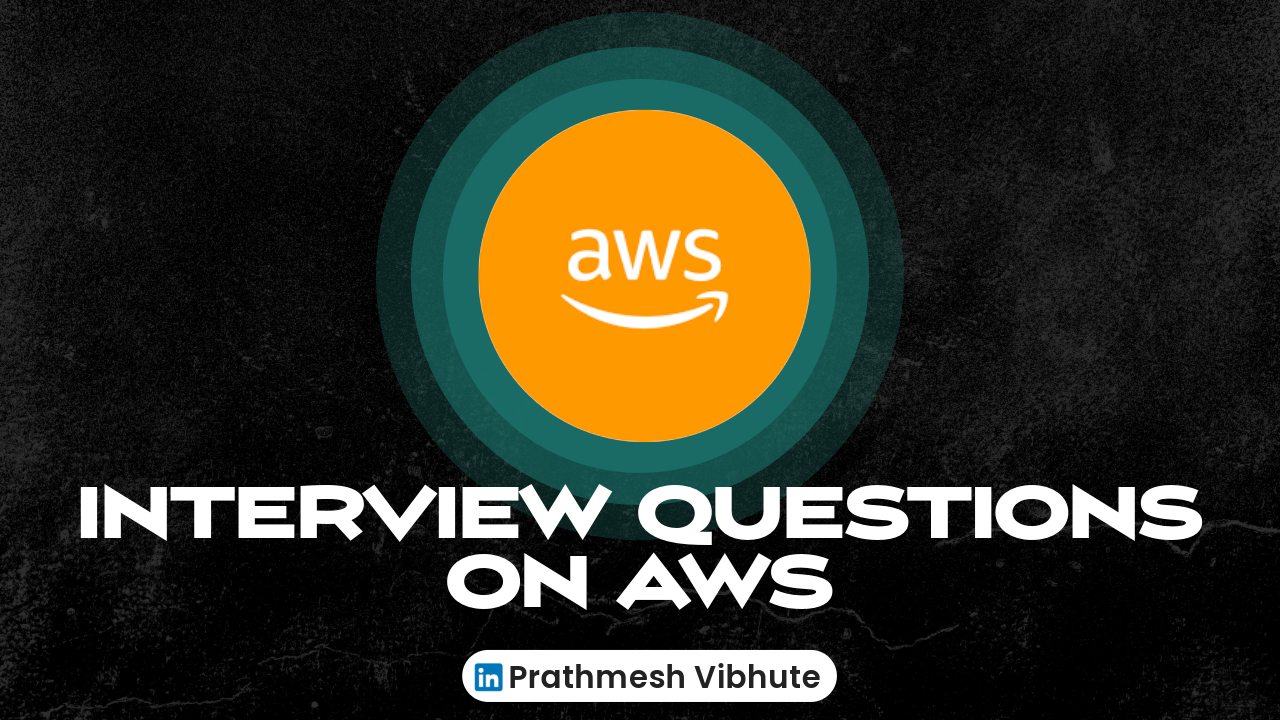Day 49 : INTERVIEW QUESTIONS ON AWS
 Prathmesh Vibhute
Prathmesh Vibhute
A Dive into AWS Interview Questions: A Comprehensive Guide
Preparing for an AWS interview can be both exciting and nerve-wracking. To help you ace your next AWS interview, let's delve into some common interview questions and discuss their answers.
1. Name 5 AWS services you have used and their use cases.
Amazon S3 (Simple Storage Service): Used for storing and retrieving data. It's great for hosting static websites, backup and restore, and data archiving.
Amazon EC2 (Elastic Compute Cloud): Provides scalable computing capacity in the cloud. Use cases include web hosting, application hosting, and data processing.
Amazon RDS (Relational Database Service): Managed database service for SQL databases. Ideal for applications requiring a relational database backend.
Amazon DynamoDB: A NoSQL database service for applications that need low-latency data access at any scale.
Amazon Redshift: Data warehousing solution for analytics and business intelligence applications.
2. What tools are used to send logs to the cloud environment?
Common tools for sending logs to the cloud include AWS CloudWatch Logs, AWS CloudTrail, and third-party tools like Fluentd or Logstash.
3. What are IAM Roles? How do you create/manage them?
IAM Roles are a way to grant permissions to entities within AWS. They are used to delegate access to AWS resources securely. You can create and manage IAM Roles through the AWS Management Console, CLI, or SDKs.
4. How to upgrade or downgrade a system with zero downtime?
To upgrade or downgrade a system with zero downtime, you can use strategies like blue-green deployments, canary deployments, or rolling deployments. These strategies involve gradually shifting traffic or resources to the updated system while maintaining availability.
5. What is infrastructure as code (IaC) and how do you use it?
Infrastructure as code is the practice of managing and provisioning infrastructure using code and automation. Tools like AWS CloudFormation or Terraform allow you to define infrastructure resources in code, enabling consistent and repeatable deployments.
6. What is a load balancer? Give scenarios of each kind of balancer based on your experience.
A load balancer distributes incoming network traffic across multiple servers to ensure optimal resource utilization and high availability. Types of load balancers include Application Load Balancers (ALB) for HTTP/HTTPS traffic, Network Load Balancers (NLB) for TCP/UDP traffic, and Classic Load Balancers (CLB) for EC2 instances.
7. What is CloudFormation and why is it used for?
AWS CloudFormation is a service that allows you to provision and manage AWS infrastructure using code templates. It's used for automating the deployment of resources, enabling infrastructure as code practices, and ensuring consistency across environments.
8. Difference between AWS CloudFormation and AWS Elastic Beanstalk?
AWS CloudFormation is focused on infrastructure provisioning and management, allowing you to define and deploy resources using templates. AWS Elastic Beanstalk is a platform as a service (PaaS) offering that automates the deployment and management of applications, handling infrastructure details for you.
9. What are the kinds of security attacks that can occur on the cloud? And how can we minimize them?
Common security attacks on the cloud include DDoS attacks, data breaches, and unauthorized access. To minimize these risks, best practices include implementing strong IAM policies, encryption, network security measures, monitoring/logging, and regular security audits.
10. Can we recover the EC2 instance when we have lost the key?
Yes, you can recover access to an EC2 instance if you have lost the key pair by creating a new key pair and attaching it to the instance. However, this process may require stopping and restarting the instance.
11. What is a gateway?
A gateway is an entry point or interface that connects different networks or services. In AWS, examples include API Gateways for managing APIs, VPN Gateways for connecting on-premises networks to the cloud, and Internet Gateways for enabling internet access to VPCs.
12. What is the difference between Amazon RDS, DynamoDB, and Redshift?
Amazon RDS: Managed relational database service supporting multiple database engines like MySQL, PostgreSQL, SQL Server, etc.
Amazon DynamoDB: Fully managed NoSQL database service for fast and scalable performance.
Amazon Redshift: Fully managed data warehousing service for analytics and business intelligence, optimized for querying large datasets.
13. Do you prefer to host a website on S3? What's the reason if your answer is either yes or no?
Hosting a website on Amazon S3 can be cost-effective and scalable, especially for static content. However, for dynamic content or complex web applications, using services like AWS Elastic Beanstalk or EC2 instances with load balancers and autoscaling may be more suitable.
These interview questions cover a wide range of topics essential for an AWS professional. By understanding and practicing these concepts, you'll be well-prepared to showcase your expertise in AWS interviews. Good luck!
I'm confident that this article will prove to be valuable, helping you discover new insights and learn something enriching .
thank you : )
Subscribe to my newsletter
Read articles from Prathmesh Vibhute directly inside your inbox. Subscribe to the newsletter, and don't miss out.
Written by
